Veneto, Italy – Friday, April 16th, 2010
My initial ire at having to wake before six in the morning to catch a train from Roma Termini to Venezia Santa Lucia was almost immediately negated when I arrived at the right platform and discovered my train was the most super-modern high-speed train in the entire station, and that it would be a nearly non-stop three-hour journey in a luxurious coach car I had all to myself. Apparently few travelers need to get to Venice from Rome that early in the morning. Upon my arrival an older Italian gentleman wearing an Upper Michigan cap and holding a handmade sign spelling my name was waiting at the end of the platform. This was Giancarlo.
Some backstory: My mom’s side of the family is entirely Italian; my grandmother’s side from Southern Italy and my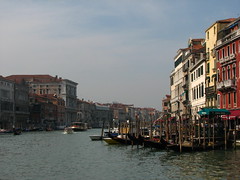 grandfather’s side from the north. While one must trace back several generations to find a relative still living in Italy, any mafia movie should teach one that to Italians, blood is everything, and as such our Italian relatives still keep in contact with us and should any of the American Povolo clan (my mom’s maiden name) visit Italy, they insist that they give us a tour of Venice and to see the lakes and mountains in the region of Verona whereby which they call home.
grandfather’s side from the north. While one must trace back several generations to find a relative still living in Italy, any mafia movie should teach one that to Italians, blood is everything, and as such our Italian relatives still keep in contact with us and should any of the American Povolo clan (my mom’s maiden name) visit Italy, they insist that they give us a tour of Venice and to see the lakes and mountains in the region of Verona whereby which they call home.
After initial greetings we boarded a Venetian bus, which are small ferries that do an amazing job at quickly docking at each stop without hitting the wood. The way Venice is laid out is there’s a large causeway connecting it to the mainland which terminates in the train station or a massive parking structure.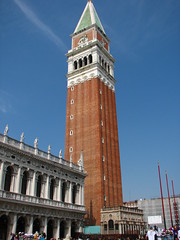 Therefore everyone enters the city at more or less the same point. From there crowds disperse over the course of the day much like in a theme park. The Canal Grande, a large river (if it can be called such as there is obviously no directional flow) snakes through the middle of the city dividing it into several different themed sections. We smartly employed the “go to the back of the park first and work our way to the front” strategy in an attempt to avoid long lines, and so we disembarked at the Piazza San Marco, where our first attractions were the Palazzo Ducale and the Basilica di San Marco. Wait times were average, thankfully the churches and palaces have a fairly high people-per-hour throughput, although a Six Flags-type policy was in place requiring that all bags or other loose articles be checked in a locker before you can enter. Cameras and cell phones are strictly prohibited (not that that stopped us from sneaking a shot inside anyway).
Therefore everyone enters the city at more or less the same point. From there crowds disperse over the course of the day much like in a theme park. The Canal Grande, a large river (if it can be called such as there is obviously no directional flow) snakes through the middle of the city dividing it into several different themed sections. We smartly employed the “go to the back of the park first and work our way to the front” strategy in an attempt to avoid long lines, and so we disembarked at the Piazza San Marco, where our first attractions were the Palazzo Ducale and the Basilica di San Marco. Wait times were average, thankfully the churches and palaces have a fairly high people-per-hour throughput, although a Six Flags-type policy was in place requiring that all bags or other loose articles be checked in a locker before you can enter. Cameras and cell phones are strictly prohibited (not that that stopped us from sneaking a shot inside anyway).
The first cultural attraction credits tucked under my belt, we then made a leisurely stroll in the general direction of the San Polo themed section in Venezialand. Giancarlo explained to me the upcharge gondola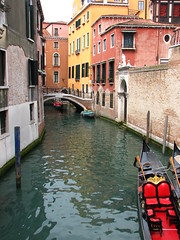 rides they have on the river, which at some €70 a pop they were even more overpriced than a go-kart at Six Flags. I forget what the story is behind the design of the black-and-white striped uniforms all gondolier team members must wear, but apparently it takes many years of study before someone can become an operator of one of these.
rides they have on the river, which at some €70 a pop they were even more overpriced than a go-kart at Six Flags. I forget what the story is behind the design of the black-and-white striped uniforms all gondolier team members must wear, but apparently it takes many years of study before someone can become an operator of one of these.
Venice suffers a bit from the same problems as other theme parks in that there are too few major attractions spread between too many food stands and gift shops, although admittedly many of these locations are of much higher quality than can be found in the knock-off Disney Parks or the knock-offs of those knock-offs. We stopped for lunch (“mangio il panino, bevo la birre”), and like any second-rate theme park, they try to rip you off by advertising what appears to be a low price but then charge you mysterious fees and extras, which Giancarlo vocally complained about (a note to anyone else that might visit Venezialand, be careful where you buy your food as this is apparently a common practice among many store owners).
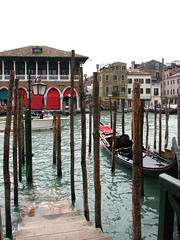 One of the other major attractions we later went on was the Basilica di Santa Maria Gloriosa dei Frari, which was in a quieter section of San Polo, and had a walk-on wait. While the outside was rather bare, the inside had a huge number of paintings, sculptures, relics and so on. I believe Venice is also home to several art galleries, but as time was rather short we needed to skip on getting every culture credit.
One of the other major attractions we later went on was the Basilica di Santa Maria Gloriosa dei Frari, which was in a quieter section of San Polo, and had a walk-on wait. While the outside was rather bare, the inside had a huge number of paintings, sculptures, relics and so on. I believe Venice is also home to several art galleries, but as time was rather short we needed to skip on getting every culture credit.
It’s ironic that I describe Venice as if it were another theme park, but the reality of the city isn’t that far away from the odes to imitation found across the world. No one actually lives in Venice so there are no real Venetians; everyone you see is a visitor, many of whom are there as employees to keep the infrastructure running and to make a profit off other visitors, or in some cases as scholars or students at an institution in Venice. And for the majority of those visitors who come as tourists, the experience is scarcely different than a visit to Epcot: you enter via the main gates, herded from one ‘must-see’ attraction to the next, passively complying with all the posted rules so there’s no disorder, you take pictures, eat food, buy gifts, and at the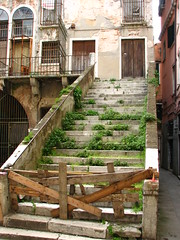 end of the experience is considered a complete one based on how many activities you got to do. The goal is to experience firsthand “the Real Italy”, but how can it be real when the entire reason it still exists is because of the tourist trade?
end of the experience is considered a complete one based on how many activities you got to do. The goal is to experience firsthand “the Real Italy”, but how can it be real when the entire reason it still exists is because of the tourist trade?
Like any good theme park, I don’t think Venice any longer represents what is real; it’s a relic of what once was real, but today it’s a simulation of what the popular myth declares the ideal Real Italy to be. Perhaps because it’s so photogenic, most of the outside world’s exposure to Italy comes from Venice and that is where the creation of that myth stems from. It’s one held by Italians themselves, whom I’ve found have an odd relationship to their historical cultural roots. They inhabit an ancient land, one which doesn’t really belong to them but they’ve inherited it because it no longer belongs to anyone else. The modern Italian personal identity is awkwardly reliant on a culture which, for lack of a better term, is extinct. Especially in the era of Berlusconi’s neo-fascism with total media control, it’s tricky for new forms of cultural identity to take hold as their rich artistic traditions once did, so they rely on the ancient landmarks to say, “this is who we are”.  (By the way, I’m not saying it’s not like that even in the United States, where people are still infatuated with the myth of the wild west and every elementary child is taught about the heritage of native Americans and our geography, my guess so they don’t become nihilists upon realizing that their cultural identity consists only of strip malls and MTV.)
(By the way, I’m not saying it’s not like that even in the United States, where people are still infatuated with the myth of the wild west and every elementary child is taught about the heritage of native Americans and our geography, my guess so they don’t become nihilists upon realizing that their cultural identity consists only of strip malls and MTV.)
However, if the existential dimensions of Venezia are of dubious authenticity today, the aesthetic experience of seeing the Venetian cityscape with one’s one eyes is certainly as true as it’s ever been. On more than one occasion while ambling down a quiet alley, peeling plaster on the walls, a docked vessel lightly rocking on the waves, Giancarlo would stop and simply explain “this is Venice”. That was all that needed to be said in those situations.
Now here’s the real Italy: after returning to Giancarlo and Teresa’s home in Schio, that evening was their son Enzo’s birthday so the entire family was over for a special dinner celebration. As per the ‘real Italy’, some television watching was also involved during dinner, which in Italy is extremely misogynistic with almost no censorship except in most cases where any intelligence is involved (as I said, the prime minister basically owns every Italian news and media outlet, it’s like FOX News mixed with Girls Gone Wild). The main course was a special homemade white lasagna, and Giulia or Giancarlo would lean over and try to translate the jokes being shared around the table, which didn’t always make literal sense in English but I could figure out at least what it would feel like to understand it. Interestingly when it came time to sing ‘Happy Birthday’ I was able to join in because apparently it’s still done in English (albeit strongly accented). Among the family members, only Giancarlo and his granddaughter Giulia (who’s about my age) spoke any English. I tried to tell as much about myself with what little Italian I knew, but would then go back to having one of my translators assist me.
“Jeremy, parli ogni italiano?”
“Um, parlo un piccolo italiano.”
They laugh and correct me, “…un po italiano.”
“Ah, sì, sì.” I think saying ‘I speak a small Italian’ communicated my point just as well, if not better.
“E che cosa fate in Italia?”
“Um, io vivo in Roma vicino il Vaticano per questa primavera… um, studio filosofia in una università americana en Trastevere. Io imparo la lingua italiana solo per tre mesi.”
“Tu sei molto buono.”
“Oh, grazie. Giulia, how do you say I am now completely out of Italian vocabulary?”
The experience was definitely one of the best memories I’ll take from Italy, at once completely removed from the comfortable familiarity of home, and yet I was here not as a foreign tourist but as a member of the extended family. Also as I recall, the red and white wine (il vino rosso e bianco) was plentiful.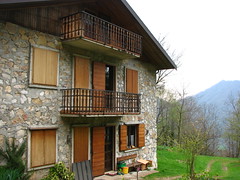
The next morning Giancarlo took me to the nearby town of Recoaro, which is where the Povolo family originates. One interesting thing I learned from Giancarlo is that the name Povolo originally came from Spain as ‘Pueblo’ which simply meant ‘people’ (so I guess we’re Spanish rather than Italian?) The ‘b’ was pronounced as a ‘v’ in Italian and over the many years it transformed into Povolo. The Povolo street (“Contrada Povoli”) is a small winding road on the side of a mountain overlooking the town, with stone-built houses and a mountain spring-fed drinking trough, and most of the people that live there are still very distant relatives. Now the only thing left to discover is why we would ever choose to leave this area.
 Later that afternoon Giulia accompanied us to take a tour of Vicenza, as she’s a student in an academy in Venice for Italian art history and was able to narrate more about the history of the city than I unfortunately can recall. It’s not the best city I would recommend an uninitiated traveler to sightsee unless they have specific historical interests in Vicenza, The best sight however was the Basilica di Santa Maria di Monte Berico, which was on a hill (Monte Berico, obviously) overlooking the entire city thus providing some great views.
Later that afternoon Giulia accompanied us to take a tour of Vicenza, as she’s a student in an academy in Venice for Italian art history and was able to narrate more about the history of the city than I unfortunately can recall. It’s not the best city I would recommend an uninitiated traveler to sightsee unless they have specific historical interests in Vicenza, The best sight however was the Basilica di Santa Maria di Monte Berico, which was on a hill (Monte Berico, obviously) overlooking the entire city thus providing some great views.
That evening Giulia invited me to go to a restaurant near Schio with three of her friends Marta, Lucia and Andrea. Three out of four in the group were quite fluent in English, which ended up being the language of choice for the evening’s conversations, although I tried my best to discuss some favorite Italian films with the non-English speaking Andrea when I learned he was also a fan of Spaghetti Westerns. Interestingly we discovered on the car ride there that the four of them were far more familiar with American music than I ever was, and I knew a great many Italian band none of them had ever heard.
“Have any of you ever heard of Banco del Mutuo Soccorso? What about Le Orme or Locanda Delle Fate? Stormy Six? It’s an English name but an Italian avant-garde group. My favorite is the early work by Premiata Forneria Marconi; their Per Un Amico is my second-favorite album of all time after one by King Crimson.”
“No, never. Those are some very odd names.”
“I know, it means ‘Award-Winning Marconi Bakery’, doesn’t it? Apparently they say the harder the name to remember, the harder the name to forget.”
“You’re a very strange American, aren’t you? Maybe we should sweech places and you live in Italy instead?”
That much is almost always apparent to me.
“The restaurant we are going to, it’s called the… well, you would call eet the “Red Tomato”.
“So we’re going to il Pomodoro Rosso?” I inquire, pleased to be getting more utility of my Italian lessons.
“Yes, very good. I’m sorry but I don’t think they have much American food, is that okay?”
“Absolutely, I want to try as much Italian food as I can. If I wanted American food that’s where I’d still be right now. Could you help me find something on the menu which I could never find anywhere else in the world outside of this town?”
“Hmm, I’m not sure. There’s a very tradesional Italian dish that’s from this area. Eet’s filled with some meet and tomatoes, and eet has a base made with mize.”
“It’s made with mice?”
“Yes. Eet’s very good, you should try it.”
I expressed my hesitancy towards sampling such an entrée, despite their insistence I was sure to like it. Upon further clarification of its ingredients I realized I had been told it was made with maize, aka corn. For the most part we had few communication problems, although I recall one moment while we were waiting for our food when I heard commented, “I hope eet comes soon, I’m very ‘angry.”
Slightly surprised by this impatience for what didn’t seem to be particularly slothful service, I expressed my regret and asked if there was anything we could do to help her mood.
“No, not angry, ‘ungry.”
“Oh, hungry!” That makes more sense. After a quick lesson on how to properly stress the English ‘h’ I got a flawless pronunciation.
Discussion ranged from traffic signs (which are nearly identical in Italy; mused Giulia, “I think we must get those from you. ‘Stop’ is not a very Italian word, is it?”), respective driving and drinking ages (in Italy it’s 18 and an unenforced 16, in the US it’s 16 and a draconian 21), Italian gender roles, what we studied, where we had traveled to, the Italian theme park I’d be visiting over the next two days, the ‘adventure’ of sleeping in a train station in Switzerland (I’ve got another one tomorrow night, which I’m pleased they immediately realized what a cool experience that was rather than a regrettable one, and even had a semi-serious request to join me on these adventures). At one point the much deeper question was posed of why I wanted to come to Italy. As they explained, the United States has the best of everything in the world and the goal for every Italian youth has always been to see America; once you’re there, where else can you possibly want to go?
It was an amusingly simple question for me, despite which I still didn’t have an immediately ready answer. I speculated it was because of the old adage that ‘the grass is always greener on the other side of the fence’, or that the rich cultural and historical presence found everywhere in Europe was sorely lacking from an American experience. But really, I secretly realized, it was nights exactly like tonight that made travel to Italy 100% worth every expense involved.
Cultural Note #11: “Ciao” is used both as a greeting and as a farewell. It’s rarely said once, often in a quick succession of two, three or more.
Since the Italian dinner period is almost never before sunset, we didn’t get back to the house until after midnight. Before leaving I quickly said to Andrea, “mi dispiache que non parlo italiano”. They vehemently insisted there was no reason to apologize for the need to conduct the evening in English. Before driving away we exchanged final farewells: “Ciao ciao ciao!”
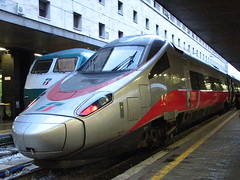












Sounds like a once in a lifetime trip, especially since family was involved. Heartwarming read Jeremy. Loved it.
Now give me coasters dang it! (jk of course)
Such a sweet story. I am tearing up as I think about how wonderful this experience was for you and for them. If you don’t mind, I plan to send this link to several family members.
Love you lots, Ciao Ciao ciao…
p.s. lots of good matches being played today at the US Open. If you aren’t at MI Adventure, I’d suggest watching a few, including the two prettiest girl in tennis, let alone the world, battle it out (Wozniacki vs. Sharapova)…probably around mid-afternoon.
Jeremy – Your writing really helped me feel as though I was experiencing the visit in person. What a great experience! I learned a lot about Venice that I never knew. And, I hope you can keep up the correspondence with the Povolo family. I thoroughly enjoyed your writing! Now, I want to see Italy in person. It must be in the blood – ha!
I enjoyed your perspective and sense of humor.
I enjoyed reading this article very much, and I was really impressed with your ability to express all of the detail of the trip in such complete terms. More than an excellent way to communicate your trip. Thank you!